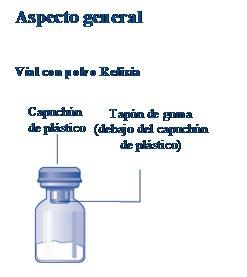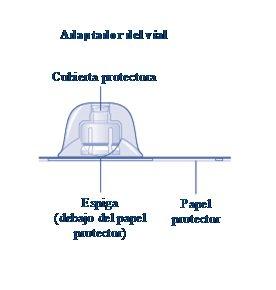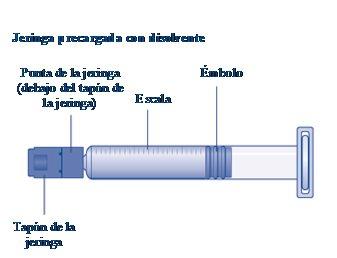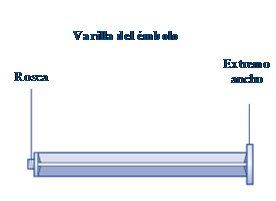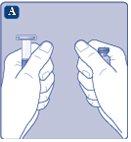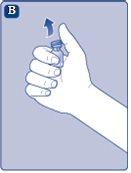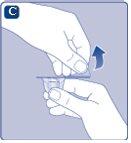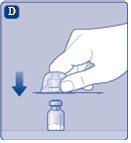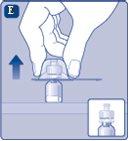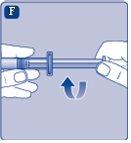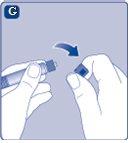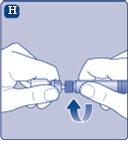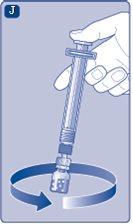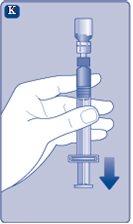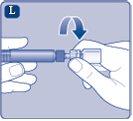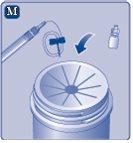
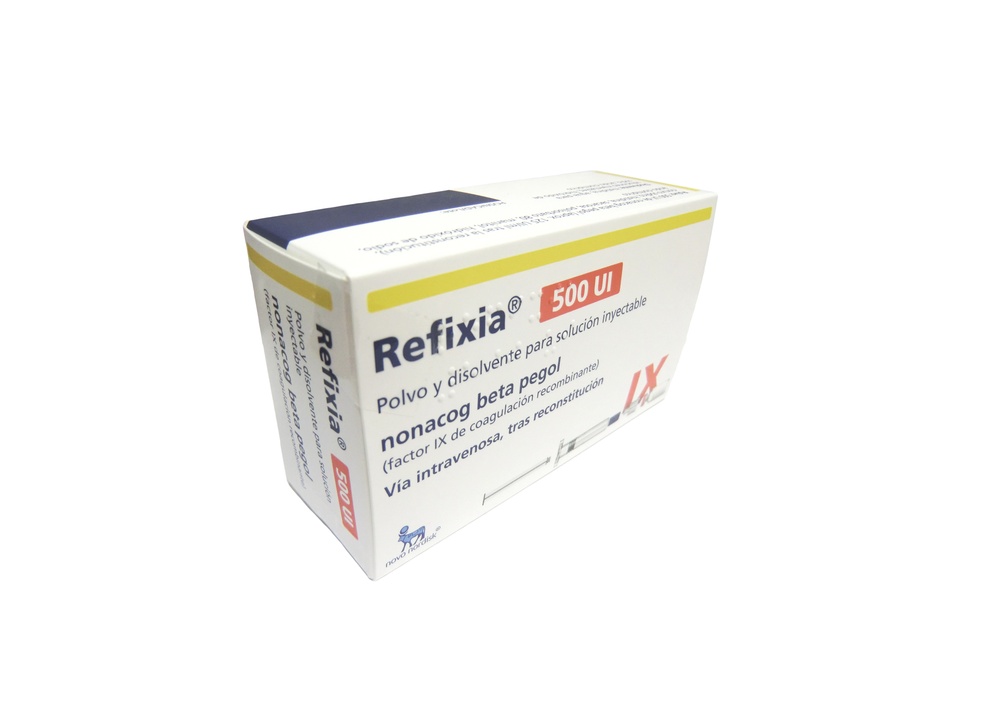
РЕФИКСИЯ 500 МЕ ПОРОШОК И РАСТВОРИТЕЛЬ ДЛЯ ПРИГОТОВЛЕНИЯ ИНЪЕКЦИОННОГО РАСТВОРА

Спросите врача о рецепте на РЕФИКСИЯ 500 МЕ ПОРОШОК И РАСТВОРИТЕЛЬ ДЛЯ ПРИГОТОВЛЕНИЯ ИНЪЕКЦИОННОГО РАСТВОРА

Инструкция по применению РЕФИКСИЯ 500 МЕ ПОРОШОК И РАСТВОРИТЕЛЬ ДЛЯ ПРИГОТОВЛЕНИЯ ИНЪЕКЦИОННОГО РАСТВОРА
Введение
Прошпект: информация для пользователя
Рефиксия500МЕ полво и растворитель для раствора для инъекции
Рефиксия 1000МЕ полво и растворитель для раствора для инъекции
Рефиксия 2000МЕ полво и растворитель для раствора для инъекции
Рефиксия 3000МЕ полво и растворитель для раствора для инъекции
нонаког бета пегол
Этот препарат подлежит дополнительному наблюдению, что позволит быстро обнаружить новую информацию о его безопасности. Вы можете внести свой вклад, сообщая о побочных эффектах, которые у вас могут возникнуть. В конце раздела 4 содержится информация о том, как сообщать о этих побочных эффектах.
Прочитайте внимательно весь листок-вкладыш перед началом использования этого препарата, поскольку он содержит важную информацию для вас.
- Сохраните этот листок-вкладыш, поскольку вам может потребоваться прочитать его снова.
- Если у вас есть какие-либо вопросы, проконсультируйтесь с вашим врачом.
- Этот препарат был назначен только вам, и не следует передавать его другим людям, даже если у них такие же симптомы, как у вас, поскольку это может нанести им вред.
- Если вы испытываете побочные эффекты, проконсультируйтесь с вашим врачом, даже если это побочные эффекты, которые не указаны в этом листке-вкладыше. См. раздел 4.
Содержание листка-вкладыша
- Что такое Рефиксия и для чего она используется
- Что нужно знать перед началом использования Рефиксии
- Как использовать Рефиксию
- Возможные побочные эффекты
- Хранение Рефиксии
- Содержание упаковки и дополнительная информация
1. Что такое Рефиксия и для чего она используется
Что такое Рефиксия
Рефиксия содержит активное вещество нонаког бета пегол. Это версия фактор IX длительного действия. Фактор IX - это белок, который находится в крови и помогает остановить кровотечение.
Для чего используется Рефиксия
Рефиксия используется для лечения и профилактики эпизодов кровотечения у пациентов всех возрастных групп с гемофилией Б (врожденным дефицитом фактор IX).
У пациентов с гемофилией Б фактор IX отсутствует или не функционирует правильно. Рефиксия заменяет этот отсутствующий или нефункционирующий фактор IX и помогает крови образовывать тромбы в месте кровотечения.
2. Что нужно знать перед началом использования Рефиксии
Не используйте Рефиксию
- если вы аллергичны к активному веществу или к любому другому компоненту этого препарата (перечисленному в разделе 6).
- если вы аллергичны к белкам хомяка.
Если вы находитесь в одной из этих ситуаций или не уверены в этом, проконсультируйтесь с вашим врачом перед использованием этого препарата.
Предостережения и меры предосторожности
Отслеживаемость
Важно вести учет номера партии Рефиксии. Поэтому каждый раз, когда вы получаете новую упаковку Рефиксии, вы должны записать дату и номер партии (указанный на упаковке после "Партия") и сохранить эту информацию в безопасном месте.
Аллергические реакции и развитие ингибиторов
Существует минимальный риск того, что может возникнуть аллергическая реакция на Рефиксию. Прекратите инъекцию и обратитесь к вашему врачу или в службу скорой помощи немедленно, если вы испытываете симптомы аллергической реакции, такие как сыпь, крапивница, зуд на обширных участках кожи, покраснение и/или отек губ, языка, лица или рук, трудности с глотанием или дыханием, одышка, свистящее дыхание, чувство сжатия в груди, бледная и холодная кожа, сердцебиение и/или головокружение.
Ваш врач может потребовать немедленного лечения этих реакций. Ваш врач также может назначить анализ крови, чтобы проверить, развили ли вы ингибиторы фактор IX (нейтрализующие антитела) к вашему препарату, поскольку ингибиторы могут развиваться вместе с аллергическими реакциями. Если вы развили такие ингибиторы, у вас может быть более высокий риск испытать аллергические реакции во время будущего лечения фактором IX.
Из-за риска аллергических реакций с фактором IX ваше первоначальное лечение Рефиксией должно проводиться в медицинском учреждении или в присутствии медицинского специалиста, который может предоставить вам необходимую медицинскую помощь в случае аллергической реакции.
Обратитесь к вашему врачу немедленно, если кровотечение не останавливается так, как ожидается, или если вам необходимо значительно увеличить количество Рефиксии, которое вам нужно для остановки кровотечения. Ваш врач назначит анализ крови, чтобы проверить, развили ли вы ингибиторы (нейтрализующие антитела) к Рефиксии. Риск развития ингибиторов выше у людей, которые ранее не получали лечение препаратами фактор IX, обычно у маленьких детей.
Тромбы крови
Сообщите вашему врачу, если у вас возникла одна из следующих ситуаций, поскольку риск образования тромбов крови увеличивается во время лечения Рефиксией:
- вы недавно перенесли операцию
- у вас есть другое серьезное заболевание, такое как заболевание печени, сердца или рак
- у вас есть факторы риска развития сердечно-сосудистого заболевания, такие как высокое кровяное давление, ожирение или курение.
Почечная болезнь (нефротический синдром)
Существует минимальный риск развития почечной болезни, называемой "нефротическим синдромом", после введения высоких доз фактор IX у пациентов с гемофилией Б и ингибиторами фактор IX, а также с историей аллергических реакций.
Осложнения, связанные с катетером
Если у вас есть центральный венозный катетер, вы можете развить инфекции или тромбы крови в месте введения катетера.
Другие препараты и Рефиксия
Сообщите вашему врачу, если вы используете, недавно использовали или можете использовать любой другой препарат.
Беременность и лактация
Если вы беременны или кормите грудью, думаете, что могли стать беременной или планируете стать беременной, проконсультируйтесь с вашим врачом перед использованием Рефиксии.
Вождение и использование машин
Влияние Рефиксии на способность управлять транспортными средствами и работать с машинами отсутствует.
Рефиксия содержит натрий
Этот препарат содержит менее 1 ммоль натрия (23 мг) на флакон; это означает, что он практически не содержит натрия. В случае лечения несколькими флаконами следует учитывать общее содержание натрия.
3. Как использовать Рефиксию
Лечение Рефиксией должно быть начато врачом с опытом лечения пациентов с гемофилией Б. Следуйте точно инструкциям по введению этого препарата, указанным вашим врачом. Если у вас есть сомнения, проконсультируйтесь с вашим врачом о том, как использовать Рефиксию.
Ваш врач рассчитает вашу необходимую дозу на основе вашего веса и цели лечения.
Профилактика кровотечения
Обычная доза Рефиксии составляет 40 единиц международных единиц (МЕ) на килограмм веса тела. Она вводится путем инъекции один раз в неделю. Ваш врач может выбрать другую дозу или изменить частоту введения инъекций в соответствии с вашими потребностями.
Лечение кровотечения
Обычная доза Рефиксии составляет 40 единиц международных единиц (МЕ) на килограмм веса тела. В зависимости от местоположения и тяжести кровотечения вам может потребоваться более высокая доза (80 МЕ на килограмм) или дополнительные инъекции. Проконсультируйтесь с вашим врачом о необходимой дозе и количестве инъекций.
Использование у детей и подростков
Рефиксия может быть использована у детей и подростков всех возрастов. Доза у детей и подростков также рассчитывается на основе веса тела и является такой же, как для взрослых.
Как вводить Рефиксию
Рефиксия выпускается в виде порошка и растворителя для приготовления раствора (реконституции) и должна быть введена в вену. См. "Инструкции по использованию Рефиксии" для получения дополнительной информации.
Если вы использовали больше Рефиксии, чем необходимо
Если вы использовали больше Рефиксии, чем необходимо, обратитесь к вашему врачу.
Если вам необходимо значительно увеличить количество Рефиксии, которое вам нужно для остановки кровотечения, сообщите об этом вашему врачу немедленно. Для получения дополнительной информации см. раздел 2 "Аллергические реакции и развитие ингибиторов".
Если вы пропустили введение Рефиксии
Если вы пропустили дозу, введите пропущенную дозу как можно скорее. Не вводите двойную дозу для компенсации пропущенной дозы. Если у вас есть сомнения, проконсультируйтесь с вашим врачом.
Если вы прекратили лечение Рефиксией
Если вы прекратили лечение Рефиксией, вы перестанете быть защищенным от кровотечения или уже существующее кровотечение может не остановиться. Не прекращайте лечение Рефиксией без предварительной консультации с вашим врачом.
Если у вас есть какие-либо другие вопросы о использовании этого препарата, проконсультируйтесь с вашим врачом.
4. Возможные побочные эффекты
Как и все препараты, этот препарат может вызывать побочные эффекты, хотя не все люди испытывают их.
Возможны аллергические реакции на этот препарат.
Если возникают аллергические реакции, введение препарата должно быть немедленно прекращено. Если вы испытываете какие-либо из следующих ранних симптомов тяжелой аллергической реакции (анafilактической реакции), обратитесь к вашему врачу или в службу скорой помощи немедленно:
- трудности с глотанием или дыханием
- одышка или свистящее дыхание
- чувство сжатия в груди
- покраснение и/или отек губ, языка, лица или рук
- сыпь, крапивница или зуд
- бледная и холодная кожа, сердцебиение и/или головокружение (низкое кровяное давление).
У детей, не леченных ранее препаратами фактор IX, развитие ингибиторов (см. раздел 2) часто встречается (до 1 из 10 пациентов). Если это происходит, препарат может перестать работать должным образом, и ваш ребенок может испытать продолжающееся кровотечение. Если это происходит, вы должны немедленно обратиться к вашему врачу.
Следующие побочные эффекты были зарегистрированы для Рефиксии:
Частые побочные эффекты(могут возникать у до 1 из 10 человек)
- аллергические реакции (гиперчувствительность). Это может быть тяжелым и угрожать вашей жизни (анafilактические реакции)
- зуд (прурит)
- реакции кожи в месте инъекции
- тошнота
- чувство сильной усталости
- сыпь
- у детей, не леченных ранее препаратами фактор IX: нейтрализующие антитела (ингибиторы), анafilактические реакции.
Редкие побочные эффекты(могут возникать у до 1 из 100 человек)
- сердцебиение
- приливы крови к лицу.
Сообщение о побочных эффектах
Если вы испытываете любой побочный эффект, проконсультируйтесь с вашим врачом, фармацевтом или медсестрой, даже если это побочные эффекты, которые не указаны в этом листке-вкладыше. Вы также можете сообщить о них напрямую через национальную систему уведомления, указанную в Приложении V. Сообщая о побочных эффектах, вы можете внести свой вклад в предоставление более полной информации о безопасности этого препарата.
5. Хранение Рефиксии
Храните этот препарат в недоступном для детей месте.
Не используйте Рефиксию после даты истечения срока годности, указанной на упаковке и на этикетках флакона и предварительно заполненного шприца после "Срок годности". Срок годности - последний день месяца, указанного.
Храните в холодильнике (при температуре между 2°C и 8°C). Не замораживайте. Храните флакон в наружной упаковке, чтобы защитить его от света.
Рефиксия может быть хранена при комнатной температуре (до 30°C) в течение максимального срока 1 года. Запишите на упаковке дату, когда вы удалили Рефиксию из холодильника и поместили ее при комнатной температуре. Новая дата истечения срока годности не должна быть позже даты, указанной на коробке. Утилизируйте этот препарат, если вы не использовали его до новой даты истечения срока годности. После хранения препарата при комнатной температуре не возвращайте его в холодильник.
Используйте инъекцию сразу после приготовления раствора (реконституции). Если вы не можете использовать ее сразу, используйте в течение 24 часов, если храните в холодильнике при температуре между 2°C и 8°C, или в течение 4 часов, если храните при комнатной температуре не выше 30°C.
Порошок в флаконе - белый или слегка желтоватый порошок. Если цвет порошка изменился, не используйте его.
Реконструированный раствор прозрачный и бесцветный или слегка желтоватый. Не используйте реконструированный раствор, если вы заметили, что он содержит частицы или имеет изменение цвета.
Препараты не должны выбрасываться в канализацию или мусор. Спросите вашего фармацевта, как утилизировать упаковку и препарат, который вам больше не нужен. Таким образом, вы поможете защитить окружающую среду.
6. Содержимое упаковки и дополнительная информация
Состав Рефиксии
- Активное вещество - нонаког бета пегол (человеческий фактор свёртывания крови IX [ADNr] пегилированный). Каждый флакон Рефиксии содержит 500 ЕД, 1000 ЕД, 2000 ЕД или 3000 ЕД нонакога бета пегола, что соответствует примерно 125 ЕД/мл, 250 ЕД/мл, 500 ЕД/мл или 750 ЕД/мл после реconstitution с растворителем гистидина.
- Остальные компоненты порошка - хлорид натрия, гистидин, сахароза, полисорбат 80, маннитол, гидроксид натрия и соляная кислота. См. раздел 2 «Рефиксия содержит натрий».
- Компоненты стерильного растворителя - гистидин, вода для инъекций, гидроксид натрия и соляная кислота.
Внешний вид Рефиксии и содержимое упаковки
- Рефиксия поставляется в виде порошка и растворителя для инъекционного раствора (500 ЕД, 1000 ЕД, 2000 ЕД или 3000 ЕД порошка в флаконе и 4 мл растворителя в предварительно заполненной шприце, штатива плунжера с адаптером флакона; размер упаковки 1).
- Порошок белый или слегка белый, а растворитель прозрачный и бесцветный.
Владелец разрешения на продажу и производитель
Novo Nordisk A/S
Novo Allé
DK-2880 Багсвёр, Дания
Дата последнего обзора этой инструкции:
Другие источники информации
Подробная информация о этом лекарстве доступна на сайте Европейского агентства по лекарственным средствам: http://www.ema.europa.eu.
Инструкции по использованиюРефиксии Внимательно прочитайте эти инструкции перед использованием Рефиксии. Рефиксия поставляется в виде порошка. Перед инъекцией необходимо приготовить раствор (реconstituted) с помощью растворителя, поставляемого в шприце. Растворитель представляет собой раствор гистидина. Полученный раствор необходимо вводить в вену (инъекция в вену [IV]). Элементы этой упаковки предназначены для реconstitution и введения Рефиксии. Вам также понадобится оборудование для внутривенной инфузии (трубки и игла-бабочка), стерильные салфетки с алкоголем, марли и бинты. Эти материалы не входят в состав упаковки Рефиксии. Не используйте оборудование без надлежащей подготовки от вашего врача или медсестры. Всегда мойте руки и убедитесь, что окружающая область чистая. При приготовлении и введении лекарства непосредственно в вены важно использовать чистую и асептическую технику.Неправильная техника может привести к попаданию микробов в кровь. Не открывайте оборудование до тех пор, пока не будете готовы к его использованию. Не используйте оборудование, если оно упало или повреждено.Используйте новую упаковку вместо этого. Не используйте оборудование, если оно просрочено.Используйте новую упаковку вместо этого. Срок годности указан на внешней упаковке, флаконе, адаптере флакона и предварительно заполненной шприце. Не используйте оборудование, если подозреваете, что оно загрязнено.Используйте новую упаковку вместо этого. Не выбрасывайте никаких элементов до тех пор, пока не будет введен реconstituted раствор. Оборудование предназначено для одноразового использования. | |
Содержимое Упаковка содержит:
| |
| |
|
|
|
|
Если защитная бумага не полностью запечатана или если она повреждена, не используйте адаптер флакона. Не вынимайте адаптер флакона из защитной крышки пальцами.Если вы прикоснетесь к штифту адаптера флакона, вы можете передать микробы с ваших пальцев. |
|
После соединения не снимайте адаптер флакона с флакона. |
|
Снимите защитную крышкус адаптера флакона. Не снимайте адаптер флакона с флаконапри снятии защитной крышки. |
|
|
|
Если крышка шприцыослаблена или отсутствует, не используйте предварительно заполненную шприцу. |
|
|
|
|
|
Не встряхивайте флакон, поскольку это может создать пену.
|
|
Рекомендуется использовать Рефиксию сразу после реconstitution,поскольку, если она будет оставлена, лекарство может потерять стерильность и может вызвать инфекции. Если вы не можете использовать реconstituted раствор Рефиксии сразу, вы должны использовать его в течение 4 часов, если он хранится при комнатной температуре (до 30°C), и в течение 24 часов, если он хранится в холодильнике (между 2°C и 8°C). Храните реconstituted продукт в флаконе. Не замораживайте реconstituted раствор Рефиксии и не храните его в шприцах. Храните реconstituted раствор Рефиксии подальше от прямого света. Если ваша доза требует более одного флакона, повторите шаги Адо Йс дополнительными флаконами, адаптерами флаконов и предварительно заполненными шприцами, пока не будет достигнута необходимая доза. | |
Если в любой момент в шприце есть воздух, введите воздух обратно в флакон.
|
|
|
|
Теперь Рефиксия готова к введению в вену.
Введение Рефиксии через соединители без иглы для внутривенных катетеров (IV) Осторожность:предварительно заполненная шприца сделана из стекла и предназначена для совместимости со стандартными соединениями Luer-lock. Некоторые соединители без иглы с внутренней штифтом несовместимы с предварительно заполненной шприцей. Эта несовместимость может предотвратить введение лекарства и/или повредить соединитель без иглы. Введение раствора через устройство доступа к вене (DAVC), такое как центральный венозный катетер или субкутанный порт:
| |
Утилизация
Не выбрасывайте в домашний мусор. |
|
Не разбирайте оборудование до его утилизации. Не повторно используйте оборудование. |
- Страна регистрации
- Активное вещество
- Требуется рецептДа
- Производитель
- Информация носит справочный характер и не является медицинской рекомендацией. Перед приемом любых препаратов проконсультируйтесь с врачом. Oladoctor не несет ответственности за медицинские решения, принятые на основе этого контента.
- Аналоги РЕФИКСИЯ 500 МЕ ПОРОШОК И РАСТВОРИТЕЛЬ ДЛЯ ПРИГОТОВЛЕНИЯ ИНЪЕКЦИОННОГО РАСТВОРАФорма выпуска: ИНЪЕКЦИОННЫЙ РАСТВОР, 1000 МЕАктивное вещество: фактор свертывания крови человека IXПроизводитель: Swedish Orphan Biovitrum Ab (Publ)Требуется рецептФорма выпуска: ИНЪЕКЦИОННЫЙ РАСТВОР, 2000 МЕАктивное вещество: фактор свертывания крови человека IXПроизводитель: Swedish Orphan Biovitrum Ab (Publ)Требуется рецептФорма выпуска: ИНЪЕКЦИОННЫЙ РАСТВОР, 250 МЕАктивное вещество: фактор свертывания крови человека IXПроизводитель: Swedish Orphan Biovitrum Ab (Publ)Требуется рецепт
Аналоги РЕФИКСИЯ 500 МЕ ПОРОШОК И РАСТВОРИТЕЛЬ ДЛЯ ПРИГОТОВЛЕНИЯ ИНЪЕКЦИОННОГО РАСТВОРА в других странах
Лучшие аналоги с тем же действующим веществом и терапевтическим эффектом.
Аналог РЕФИКСИЯ 500 МЕ ПОРОШОК И РАСТВОРИТЕЛЬ ДЛЯ ПРИГОТОВЛЕНИЯ ИНЪЕКЦИОННОГО РАСТВОРА в Польша
Аналог РЕФИКСИЯ 500 МЕ ПОРОШОК И РАСТВОРИТЕЛЬ ДЛЯ ПРИГОТОВЛЕНИЯ ИНЪЕКЦИОННОГО РАСТВОРА в Украина
Врачи онлайн по РЕФИКСИЯ 500 МЕ ПОРОШОК И РАСТВОРИТЕЛЬ ДЛЯ ПРИГОТОВЛЕНИЯ ИНЪЕКЦИОННОГО РАСТВОРА
Консультация по дозировке, побочным эффектам, взаимодействиям, противопоказаниям и продлению рецепта на РЕФИКСИЯ 500 МЕ ПОРОШОК И РАСТВОРИТЕЛЬ ДЛЯ ПРИГОТОВЛЕНИЯ ИНЪЕКЦИОННОГО РАСТВОРА – по решению врача и с учетом местных правил.




